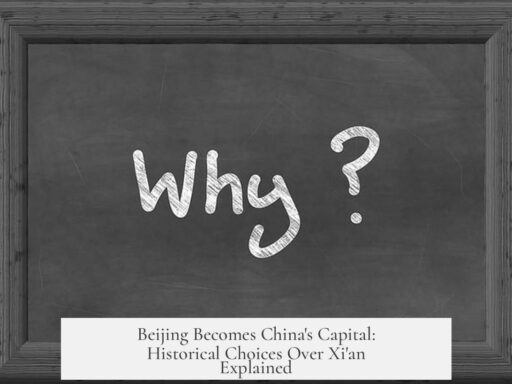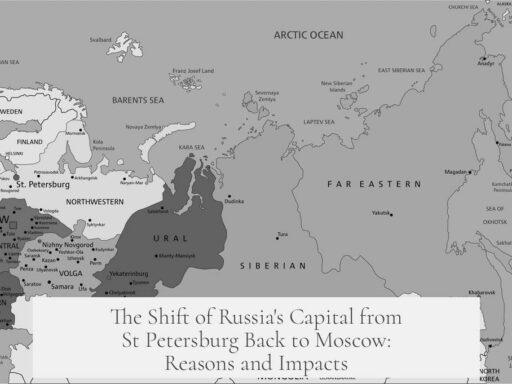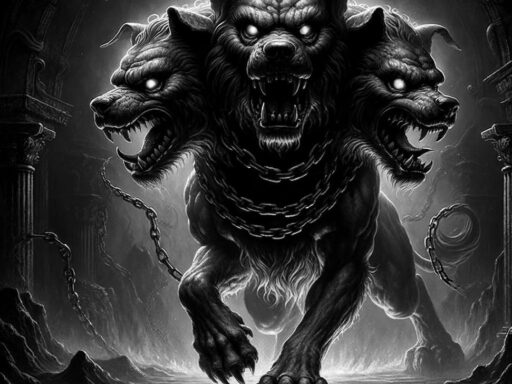The name “Madison” became popular in the United States after the 1984 movie Splash because it presented a versatile, culturally rich option for parents, unlike “Ariel” from Disney’s 1989 The Little Mermaid, which was closely tied to a single character and theme. Madison’s broader American associations, compatibility with existing naming trends, and appealing nickname “Maddie” led to its widespread adoption and growth over time, whereas Ariel’s popularity was brief and more narrowly based.
The movie Splash introduced Madison as the name of a mermaid character, but the name already held significant cultural weight beyond the film. Madison was linked to landmarks like Madison Square Garden, Madison Avenue, and the city of Madison, Wisconsin. These associations helped the name feel familiar and rooted in American culture rather than being solely associated with a mythical character.
Madison’s use as a surname also influenced its spread as a first name. The name began to be given to boys as well as girls, demonstrating flexibility. It fit a growing trend for names ending in “-son,” such as Allison and Jason, which were popular in the 1980s, further aiding Madison’s appeal.
Another key factor in Madison’s rise was the appealing and easily adoptable nickname “Maddie.” This short form aligned with a nickname-driven naming trend, where parents preferred names that offered cute or familiar diminutives. For example, in previous decades, Kim became popular due to celebrity influence and then led to the use of the longer Kimberly. Similarly, the popularity of Maddie Hayes from the TV show Moonlighting (1985–1989), portrayed by Cybill Shepherd, reinforced “Maddie” as an attractive and modern nickname. Madison thus provided an alternative to traditional names like Madeline while maintaining a trendy nickname.
The name also enjoyed reinforcement through other media. In 1991, the movie Problem Child 2 featured twins named Dolly and Madison, referencing the historical figure James Madison’s wife. This type of exposure reassured people that Madison was a name with charm and history, helping it gain social acceptance and popularity. Statistics showed a jump in the name’s use in 1991, with around 2,400 girls named Madison, up from about 1,400 the year before, marking the start of a rapid climb.
On the other hand, Ariel’s trajectory was different despite initial popularity. The Disney princess Ariel saw the largest increase in use after The Little Mermaid premiered in 1989, fitting into the wave of “liquid names” that were fashionable at the time, characterized by smooth vowel sounds and few plosive consonants. However, the name faced challenges. It was already somewhat familiar due to being the protagonist in the 1984 film Footloose, but that familiarity was limited and did not translate into lasting appeal.
Most significantly, Ariel suffered from its very strong association with the Disney character. Parents soon realized that the name was heavily identified with the cartoon princess, which became a limitation. Much like how the digital assistant “Alexa” caused a decline in the name’s popularity, Ariel’s fixed link to a fictional persona limited its flexibility as a baby name. This association likely made it less desirable for some parents seeking a more neutral or broadly applicable name.
The singular cultural connection to Disney rendered Ariel less adaptable beyond the princess image. While Ariel initially followed naming trends of the late 1980s, it did not fit comfortably alongside evolving styles beyond that period. The name spiked and then declined, contrasting with the sustained and growing popularity path followed by Madison.
| Factor | Madison | Ariel |
|---|---|---|
| Cultural Associations | Multiple American references (Square Garden, Avenue, city) | Single Disney Character association |
| Nicknames | “Maddie” popular, modern alternative | Few or less compelling nicknames |
| Pre-existing Use | Known as a surname, used for boys and girls | Known, but limited to characters (Disney/Footloose) |
| Media Reinforcement | Appearances in movies and TV beyond Splash | Mostly Disney franchise-related |
| Naming Trend Fit | Fits -son ending trend and nickname culture | Fits liquid names, but overly linked to character |
Ultimately, Madison’s broader connections and usability gave it sustained momentum. Ariel’s lasting identification with a Disney princess and lack of broader cultural roots restricted its growth. Madison also capitalized on an existing pattern of baby naming, popular nicknames, and a perceived fresh yet familiar sound.
- Madison gained popularity as a first name due to broad cultural associations and nickname appeal.
- Ariel’s popularity was tied closely to Disney’s character, limiting long-term use.
- Madison fit existing naming patterns and encouraged nickname-driven naming trends.
- Media beyond Splash reinforced Madison, unlike Ariel’s mostly Disney-related exposure.
- Nicknames like “Maddie” made Madison appealing to modern parents.
Why Did “Madison” Soar Post-‘Splash’ (1984), but “Ariel” and Other Disney Names Didn’t?
The movie Splash (1984), starring Tom Hanks as a man who falls in love with a mermaid played by Daryl Hannah, famously popularized the name “Madison” for girls in the United States. But here’s the kicker: although Disney’s The Little Mermaid (1989) launched Ariel as a beloved princess, “Madison” outpaced “Ariel” in baby naming charts by a mile. Why did Madison become a household baby name while Ariel did not?
Let’s unwrap this name drama and discover what really made Madison shine brighter in the naming universe.
First off, Madison wasn’t just a name from a fairy tale. Unlike Ariel, Madison carried substantial cultural weight before and after Splash hit theaters. It was a well-known surname tied to prominent American landmarks such as Madison Square Garden, Madison Avenue, and the city of Madison in Wisconsin. This breadth of associations gave “Madison” a familiar, robust feel that was not limited to a single character or story.
Madison: A Name with Roots and Range
When the mermaid in Splash reluctantly picks “Madison” as her human name, the name was ripe for reinvention. Before the movie’s release, Madison was primarily a surname and not widely used as a girl’s first name. Post-Splash, though, it exploded—baby girls named Madison jumped from 1,400 before the movie to 2,400 the following year.
The timing couldn’t have been better. Madison arrived amid a wave of “-son” names gaining popularity, like Allison and Jason. This pattern made Madison feel modern and yet comfortably familiar.
Importantly, Madison also transcended gender lines initially, gaining some use for boys as well, highlighting the name’s versatility beyond just the “mermaid girl” stereotype. This diversity made it more broadly appealing to parents searching for flexible yet trendy names.
The Power of the Nickname “Maddie”
One secret weapon Madison had was the appealing nickname “Maddie.” Short, sweet, and endlessly charming, “Maddie” slipped easily off the tongue and landed well with parents. Nickname-driven naming trends have a rich history—for example, in the 1950s, “Kim” surged in popularity due to pop culture figures Kim Hunter and Kim Novak but eventually birthed the longer form Kimberly.
Madison offered exactly the kind of fresh twist parents craved—an option to use a more modern, less formal name than Madeline but still capture the familiar “Maddie.” This was reinforced by media around the same time, like the character Maddie Hayes played by Cybill Shepherd in the TV show Moonlighting (1985-1989), which subtly nudged the popularity needle toward Madison and its derivatives.
Why Ariel Couldn’t Keep Pace
So, if Ariel debuted as a Disney princess in 1989 and instantly fired up the imagination of many kids and parents, why didn’t it explode like Madison?
Ariel’s strong association with Disney’s character became a double-edged sword. On one hand, the name enjoyed a significant rise immediately after the movie’s release; on the other, it didn’t sustain or grow because parents grew wary of naming their child with such a heavy, singular cultural tag. Naming a baby Ariel meant they’d forever be linked to the mermaid princess image—something not every parent finds ideal for their child’s unique identity.
Besides, Ariel was already floating around pop culture before the movie, featured notably in the 1984 film Footloose as the protagonist’s name. The Disney version reinforced familiarity with the name but didn’t open it up as a fresh canvas like Madison did.
Another factor is the “liquid names” trend—names with smooth, vowel-heavy sounds—like Emma, Emily, Olivia, and Amelia—that started catching on around this time. Ariel fit the pattern but was one among many, and its saturation as a Disney symbol somewhat capped its broader parental appeal.
Ariel also faced a “too popular” hangover—similar to Amazon’s Alexa. When the digital assistant Alexa launched, the name shot up, but soon many parents dropped it to avoid confusion with talking to smart devices. Ariel suffered a similar fate by being “too much” Ariel, the princess, to be just a kid’s name.
What Does This Mean for Baby Names Inspired by Movies?
This case study reveals a strong lesson: cultural versatility matters.
| Factor | Madison | Ariel |
|---|---|---|
| Cultural Associations | Multiple (places, surnames, pop culture) | Primarily Disney princess |
| Nickname Appeal | Strong (“Maddie”) | Weaker or less obvious |
| Gender Flexibility | Used for boys and girls | Almost exclusively female |
| Media Reinforcement After Release | Additional references (Problem Child 2, Moonlighting) | Primarily Disney-related |
| Trend Context | Fit broader naming trends (e.g., -son endings) | Part of “liquid names” but no sustained growth |
Practical Tip for Baby Name Hunters
If you’re seeking a baby name inspired by pop culture, consider names that have broader meanings or associations beyond a single iconic character. Names with appealing nicknames tend to stick better in the popular imagination, and flexible usage across gender or contexts helps a name age well.
Think alongside Madison—not just the character, but everywhere you’ve heard the name, from historical figures to famous places. This layering adds richness that pure character names might lack.
A Nerdy Naming Journey with a Laugh
The story of Madison and Ariel offers a tiny glimpse into how naming isn’t just about liking a name’s sound. It’s a dance of cultural references, social trends, personal identity, and yes, sometimes even a splash of luck.
Picture parents in the mid-80s: They watch Splash, hear a fresh name “Madison,” and think, “Hey, that sounds new but isn’t wild.” They can picture calling their daughter “Maddie” at daycares and soccer games without confusion. Meanwhile, five years later, other parents see Ariel dazzling on a big red wig but hesitate, worried their kid might get mermaid-themed birthday cakes for life or teased endlessly.
Does this mean Disney princess names are bad name choices? Not at all! Just that names need context and balance. “Ariel” shines in its own right, but “Madison” wins the versatility award. So, the next time you catch a baby name trend from a movie, ask yourself: What’s the full story behind this name?
References
- Wattenberg, Laura. “Disney Princess Baby Name Face-Off.” Namerology.com, Jan 2025.
- Mann, Nancy. “Rise of Madison.” Nancy.cc, 2014.
- Sandel, Abby. “Name of the Day: Madison.” AppellationMountain.net, 2014.
- Campbell, Mike. “Madison.” Behindthename.com.
- Evans, C. K. “The Tsunami curve and popular culture influences on given names.” Names, 2007.
- Lansky, B., & Sinrod, B. The Baby Name Survey Book. Pocket Books, 1998.
Why did the name Madison become popular after the movie *Splash* (1984)?
Madison had multiple cultural references beyond the mermaid—like Madison Avenue and Madison Square Garden. It fit existing naming trends with an appealing -son ending and offered a popular nickname, Maddie. Other media also reinforced its use.
Why didn’t the name Ariel from *The Little Mermaid* (1989) grow as much as Madison?
Ariel was strongly tied to the Disney princess, which limited its broader appeal. It briefly followed a naming trend but suffered from over-identification. The name was also familiar from earlier media, reducing its novelty.
How did the nickname “Maddie” affect Madison’s popularity?
The nickname Maddie made Madison a modern, appealing choice for parents. It also gave a fresh alternative to traditional names like Madeline. TV shows like *Moonlighting* further boosted interest in Maddie and related names.
Did Madison’s use as a surname influence its popularity as a first name?
Yes. Madison’s status as a well-known American surname helped it feel familiar and versatile. It was used for boys too, showing broader appeal. This flexibility helped Madison rise steadily after the movie.
What role did other media play in keeping Madison popular?
Besides *Splash*, Madison appeared in films like *Problem Child 2* and TV shows, reinforcing its use. Such appearances helped parents feel comfortable adopting the name beyond just the mermaid character.


